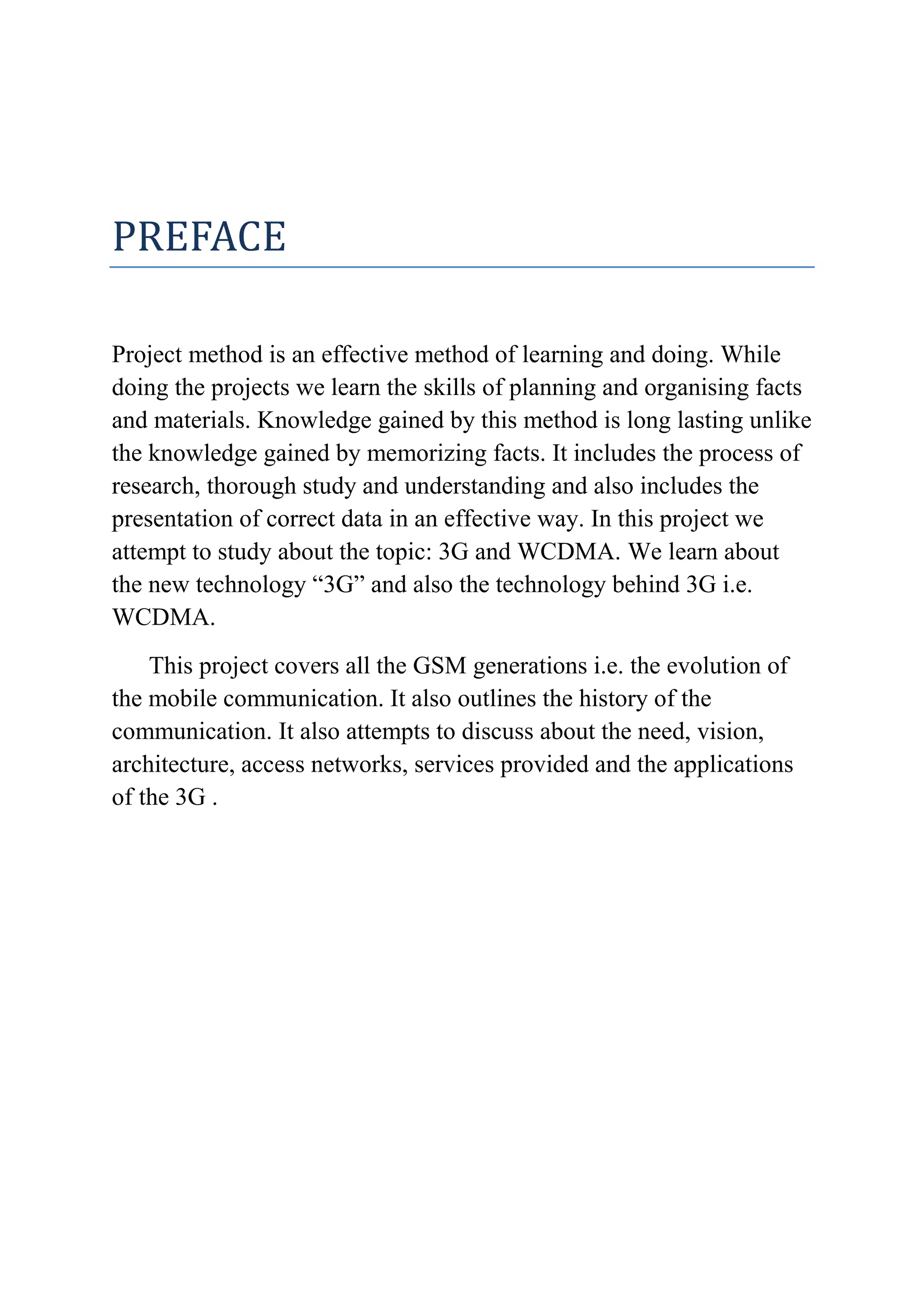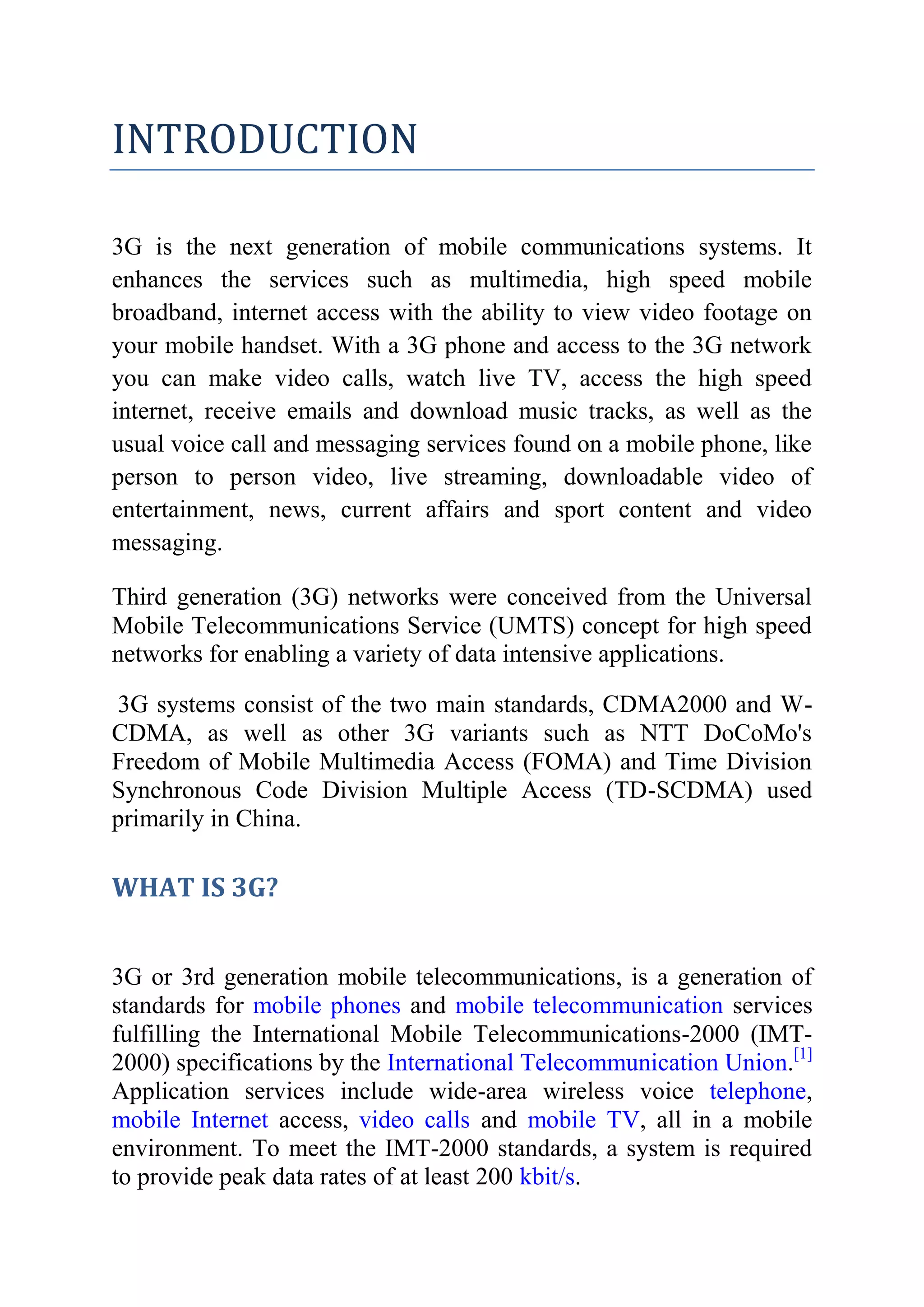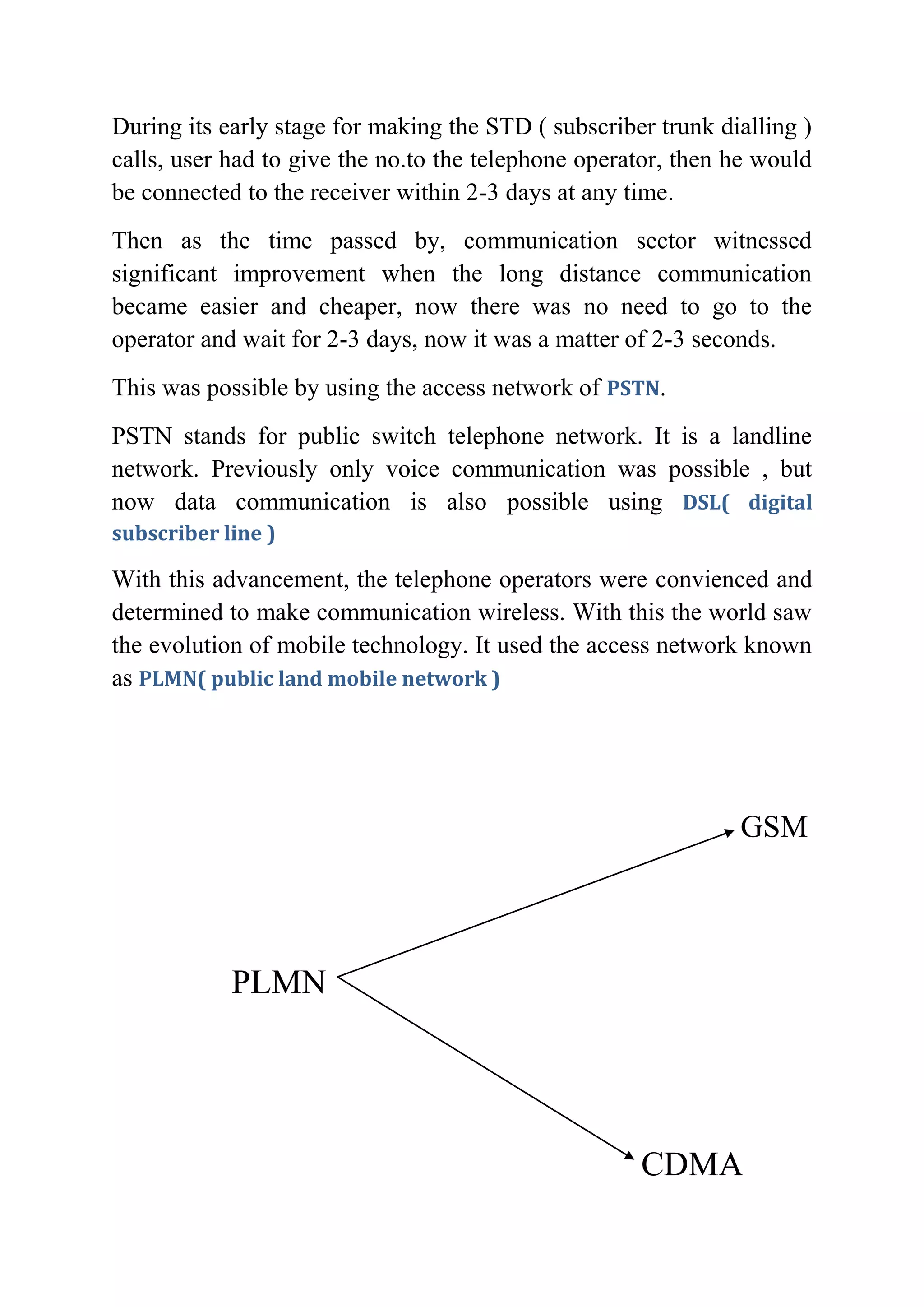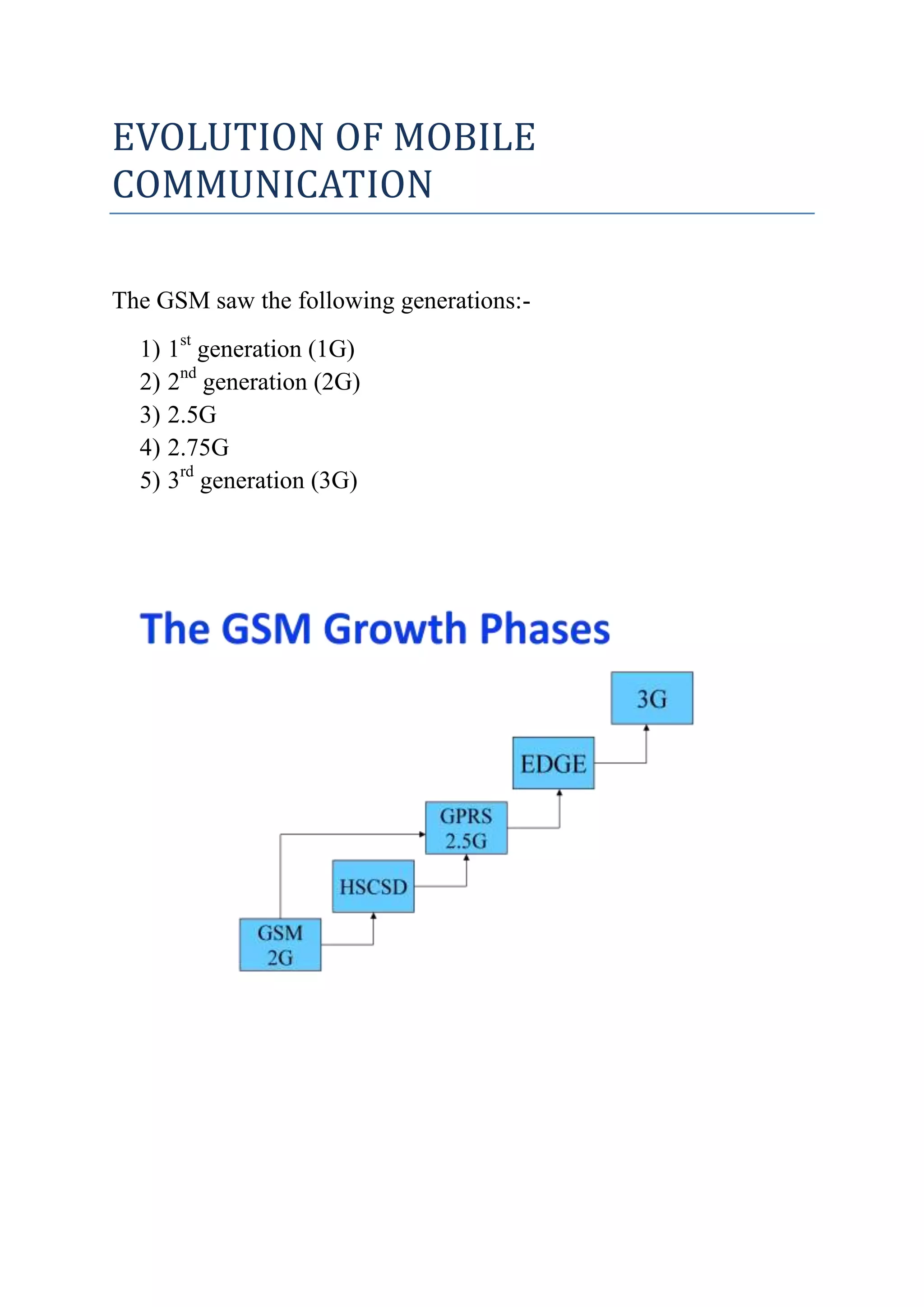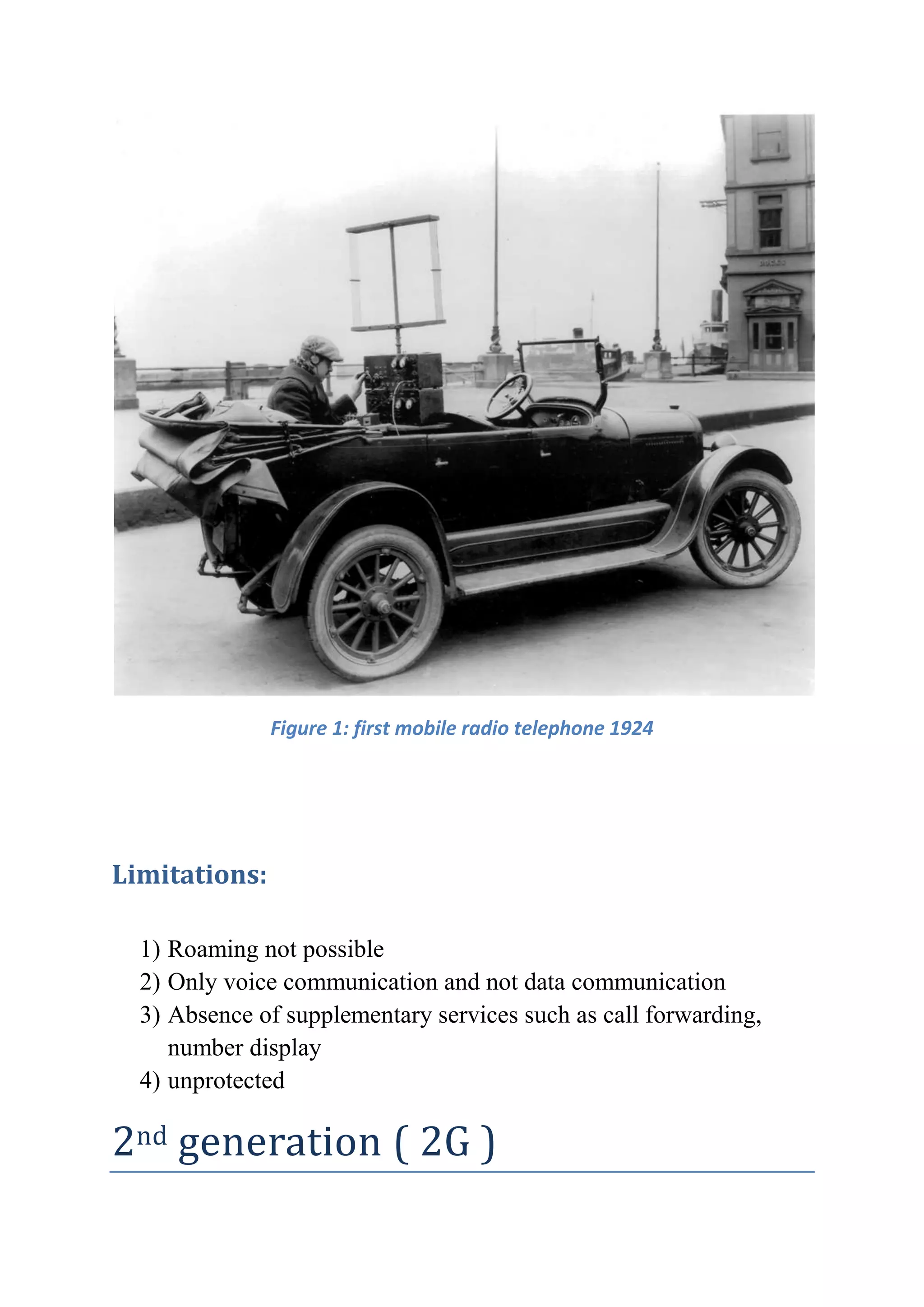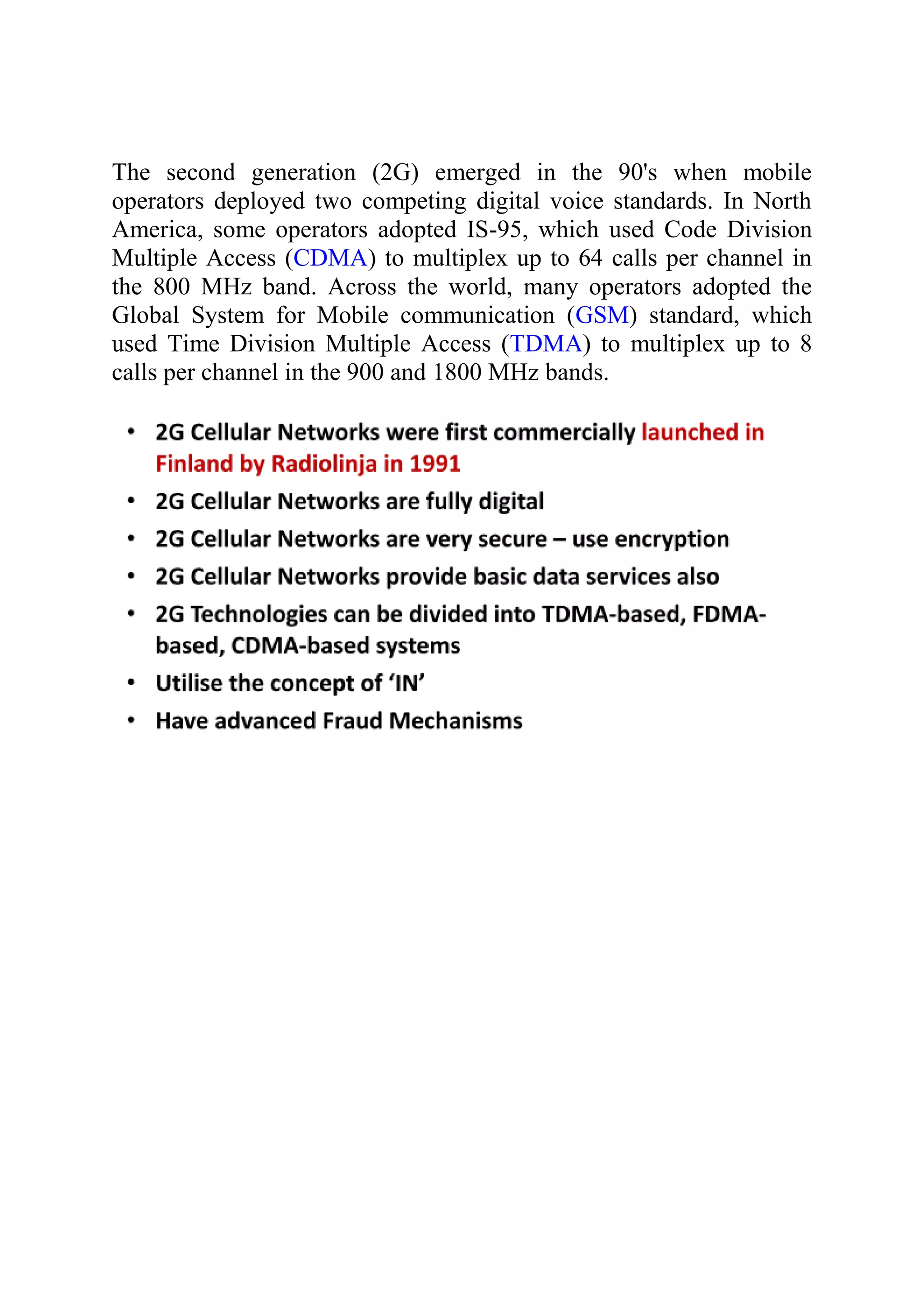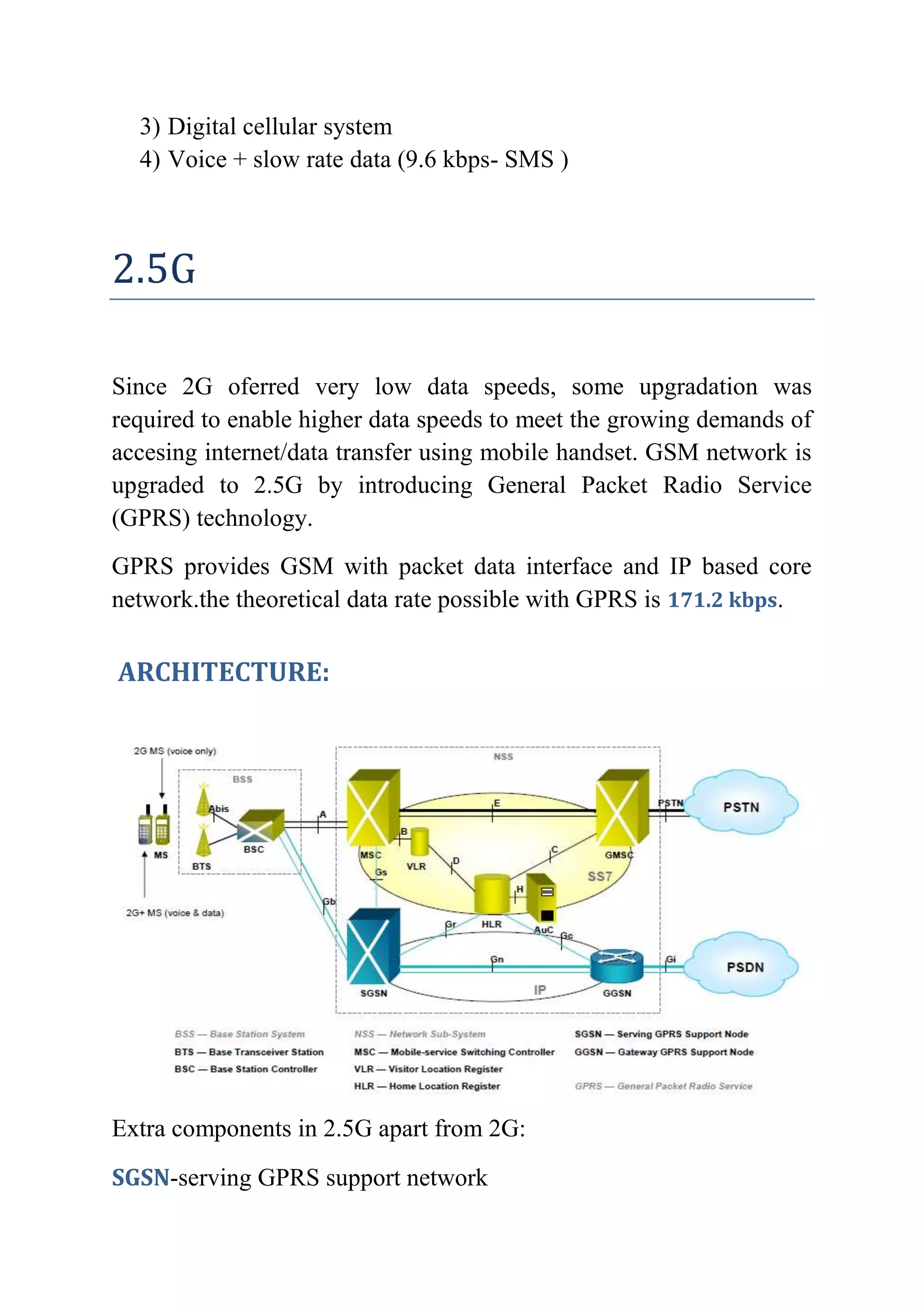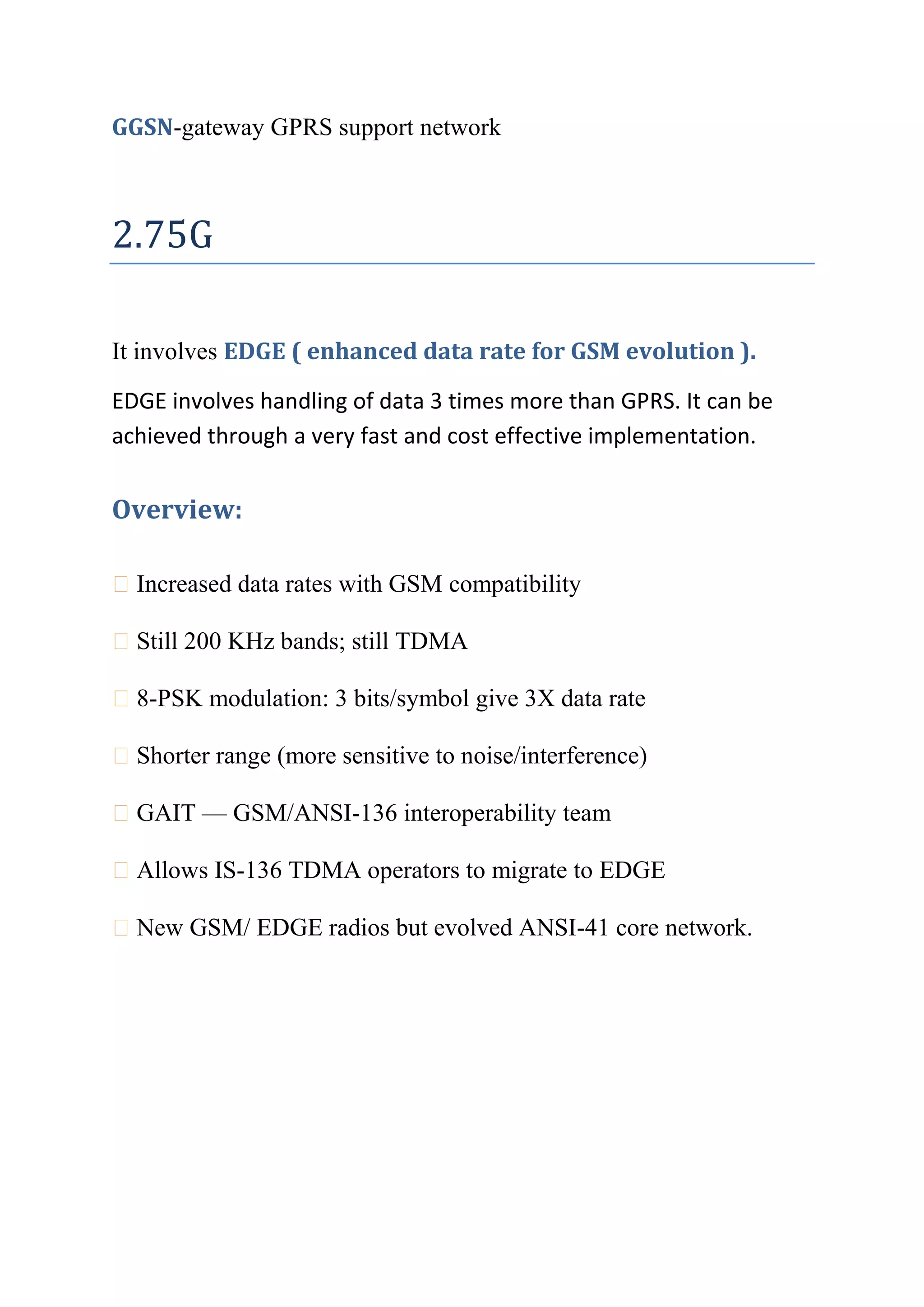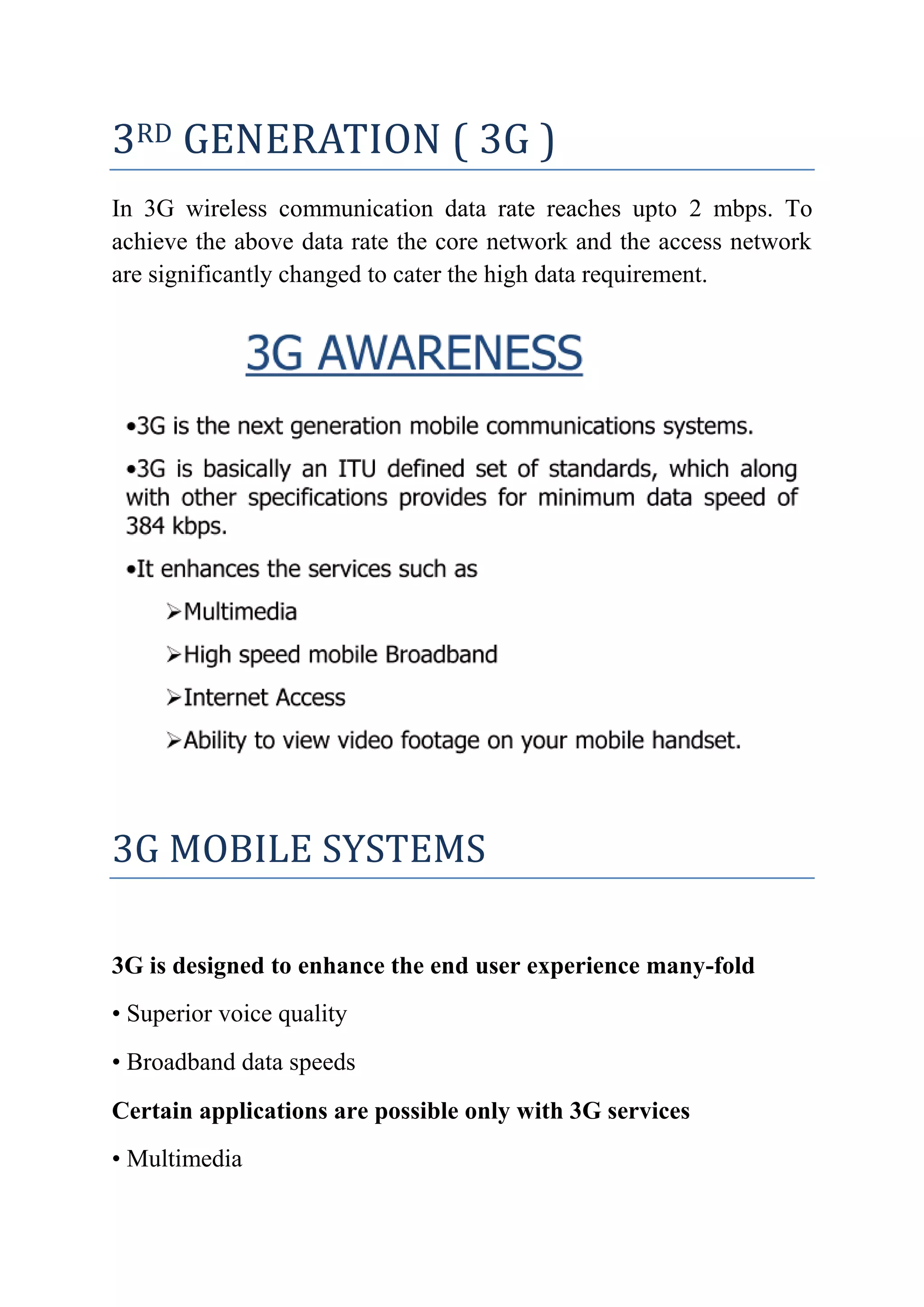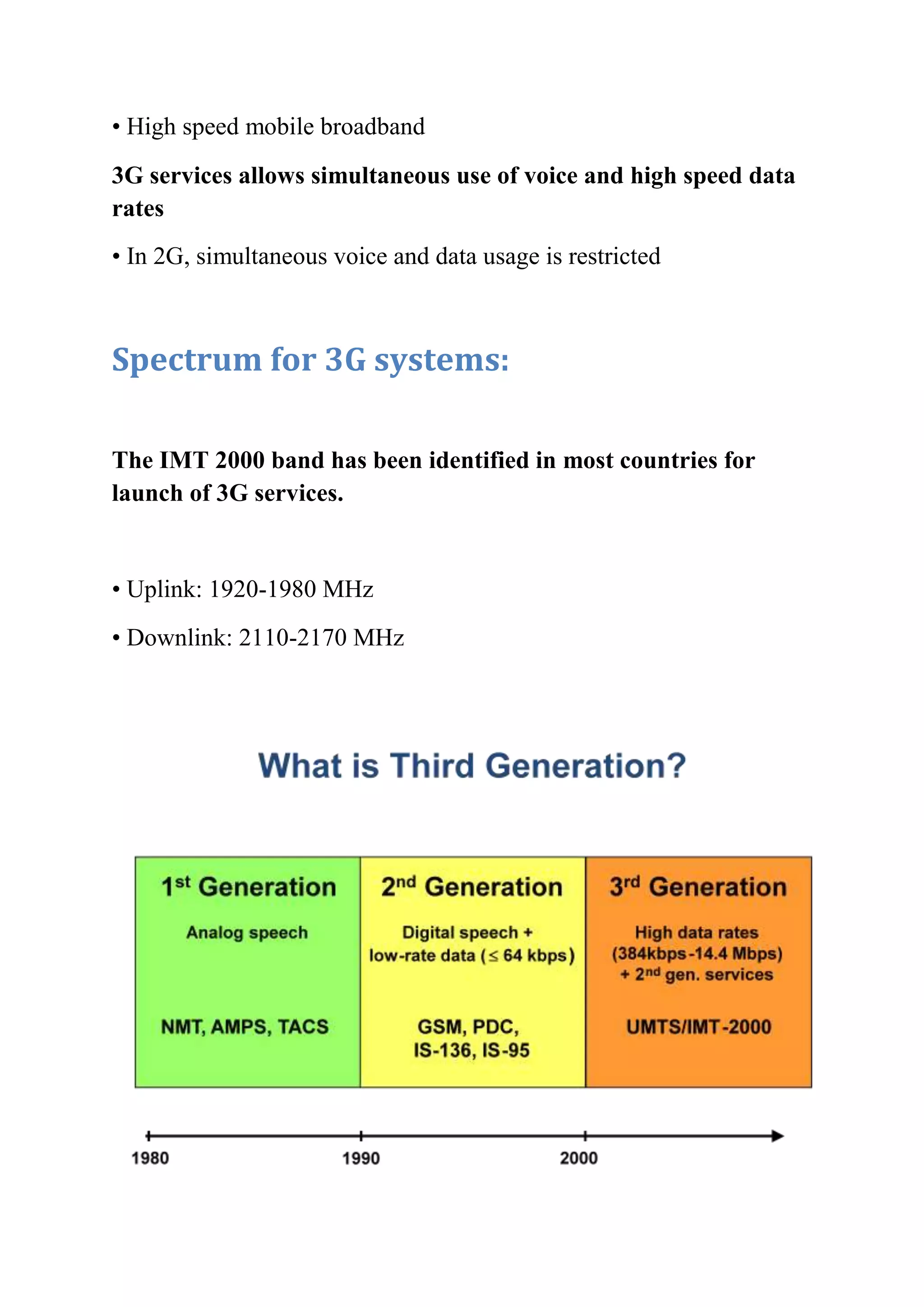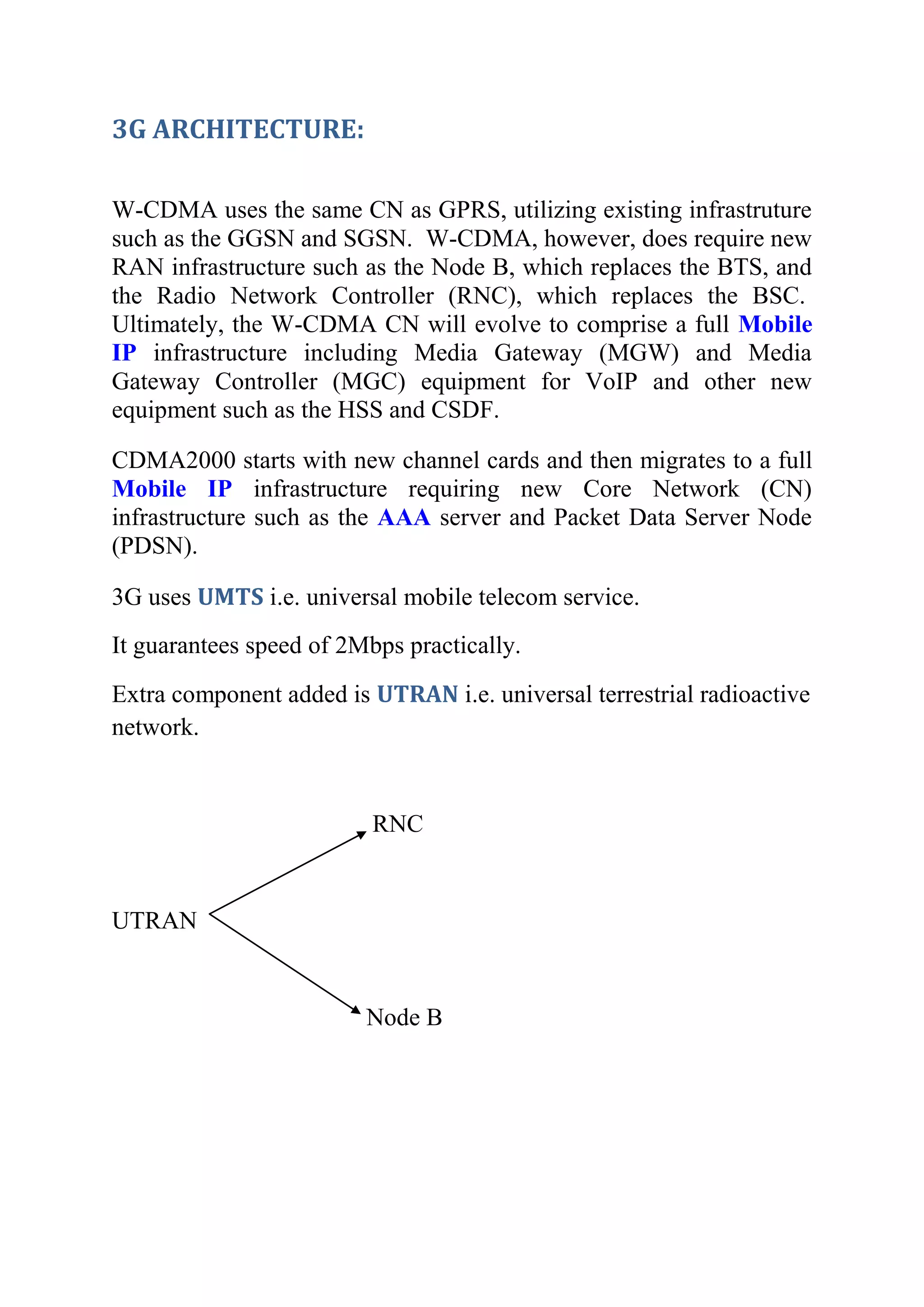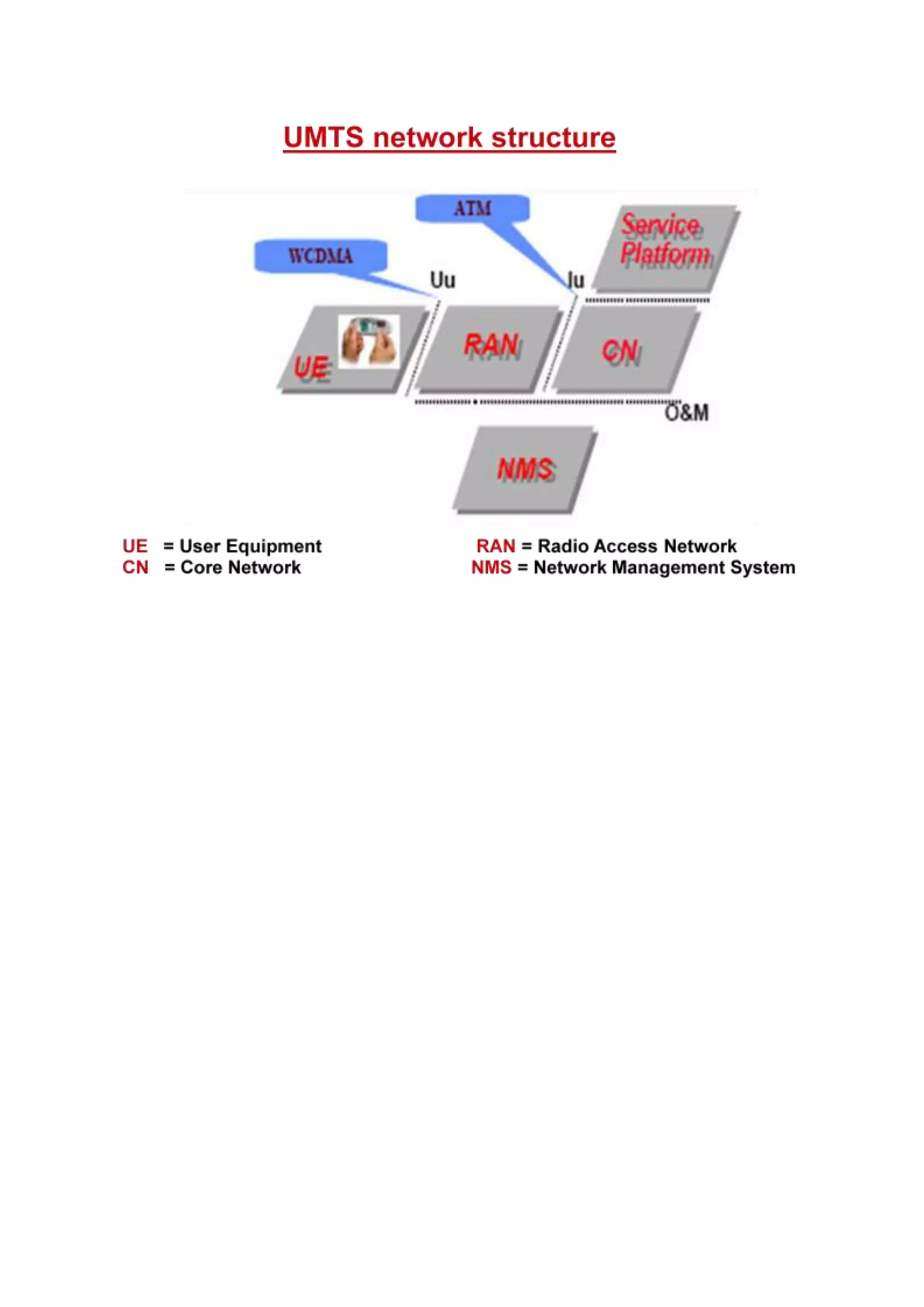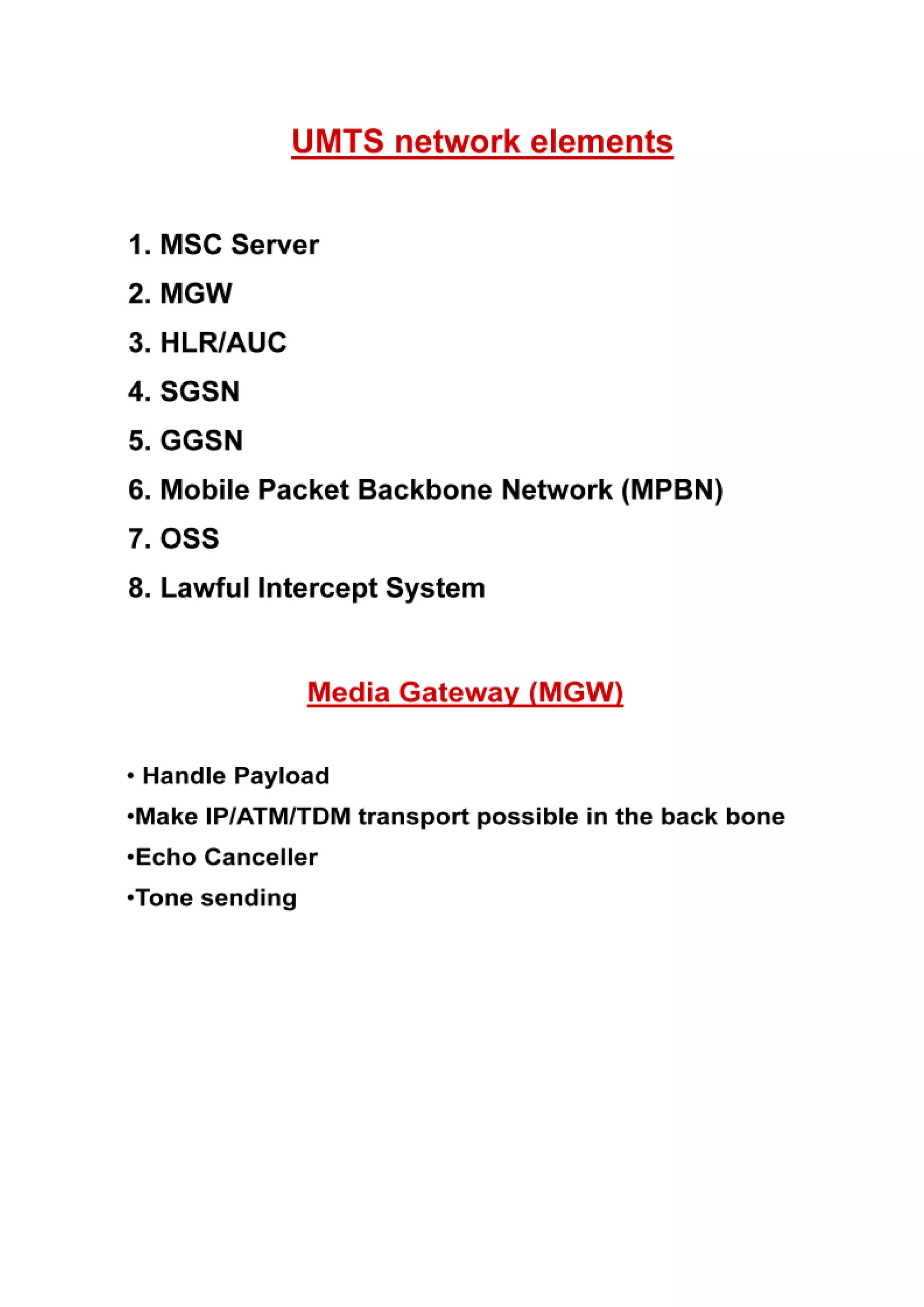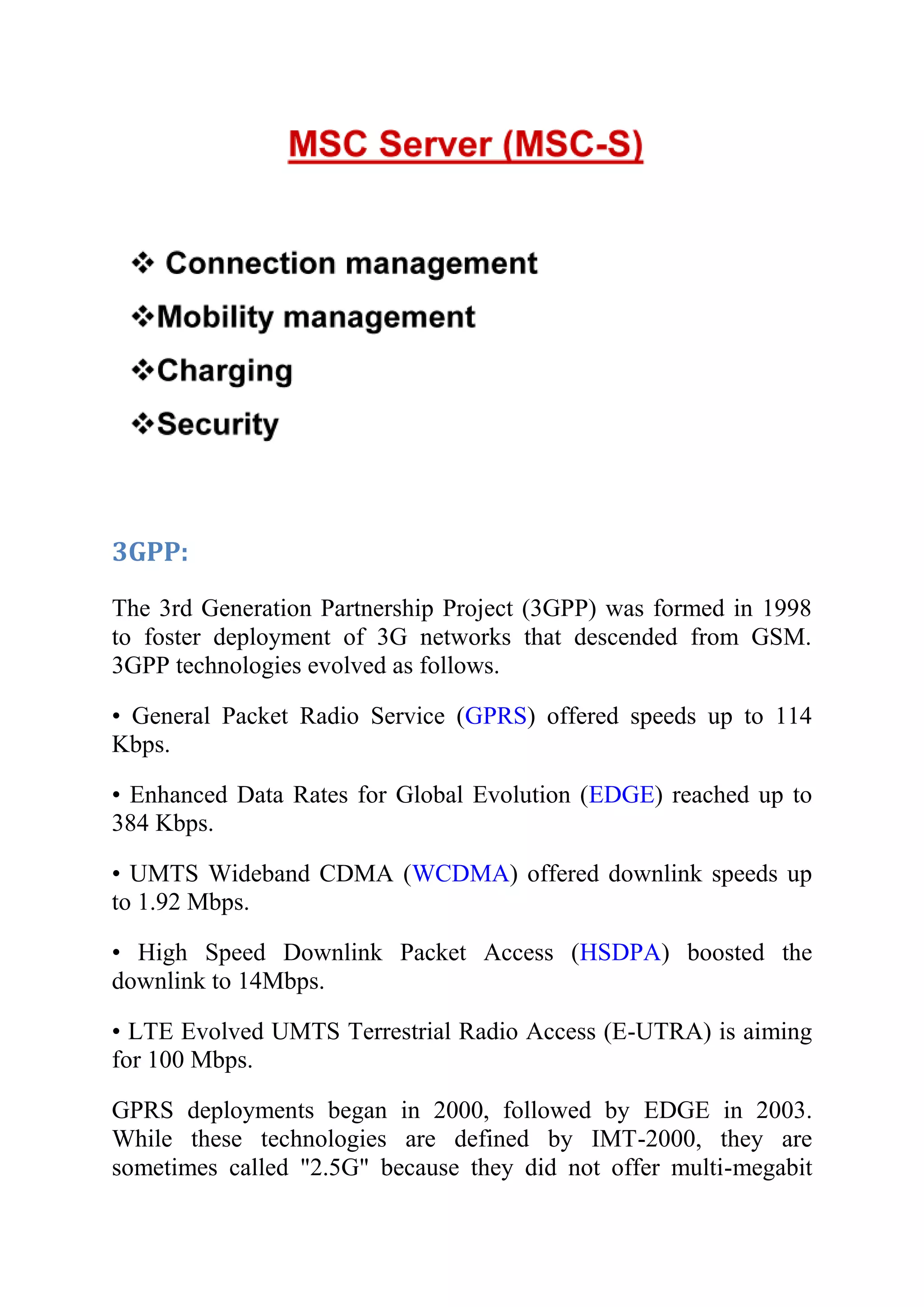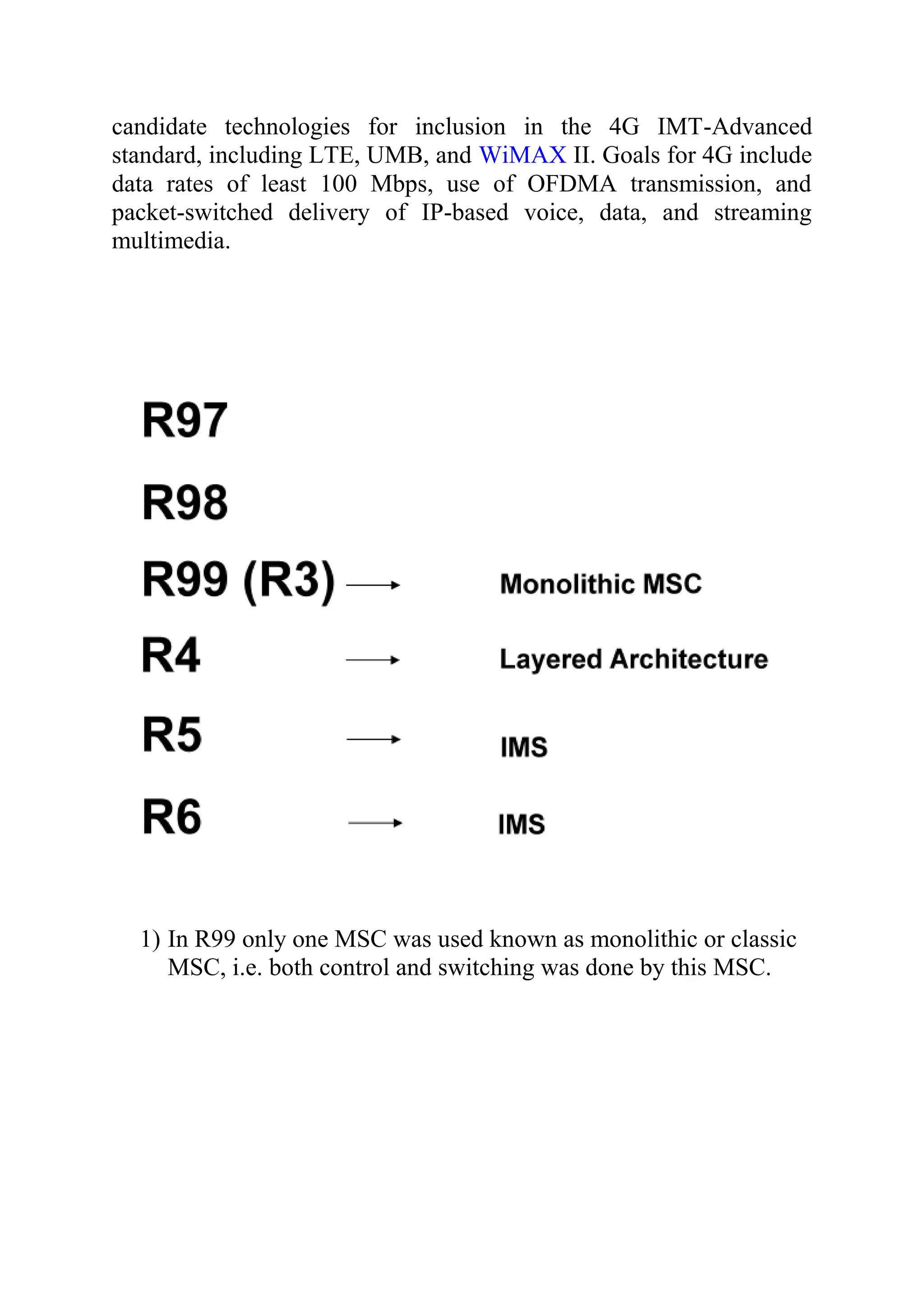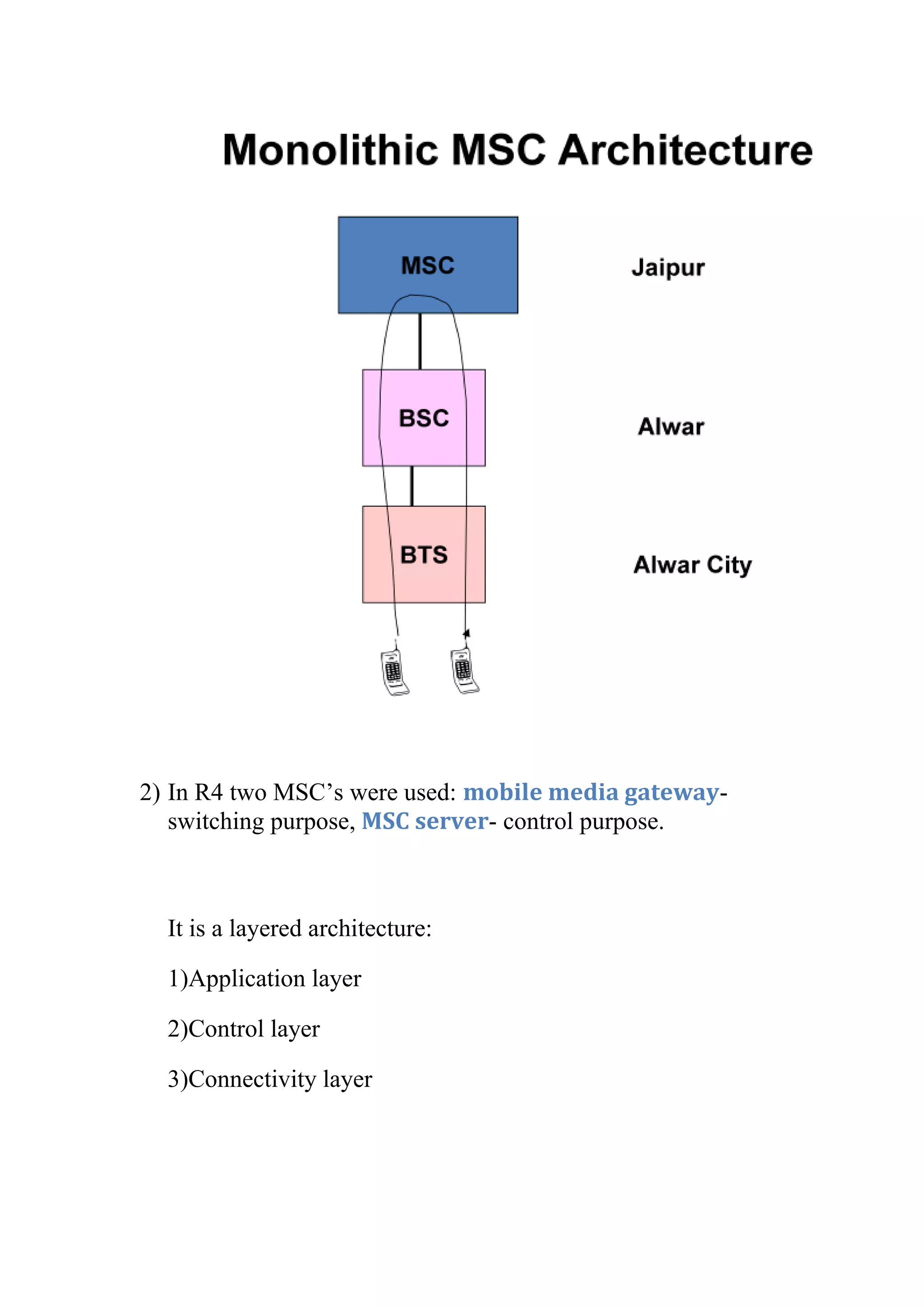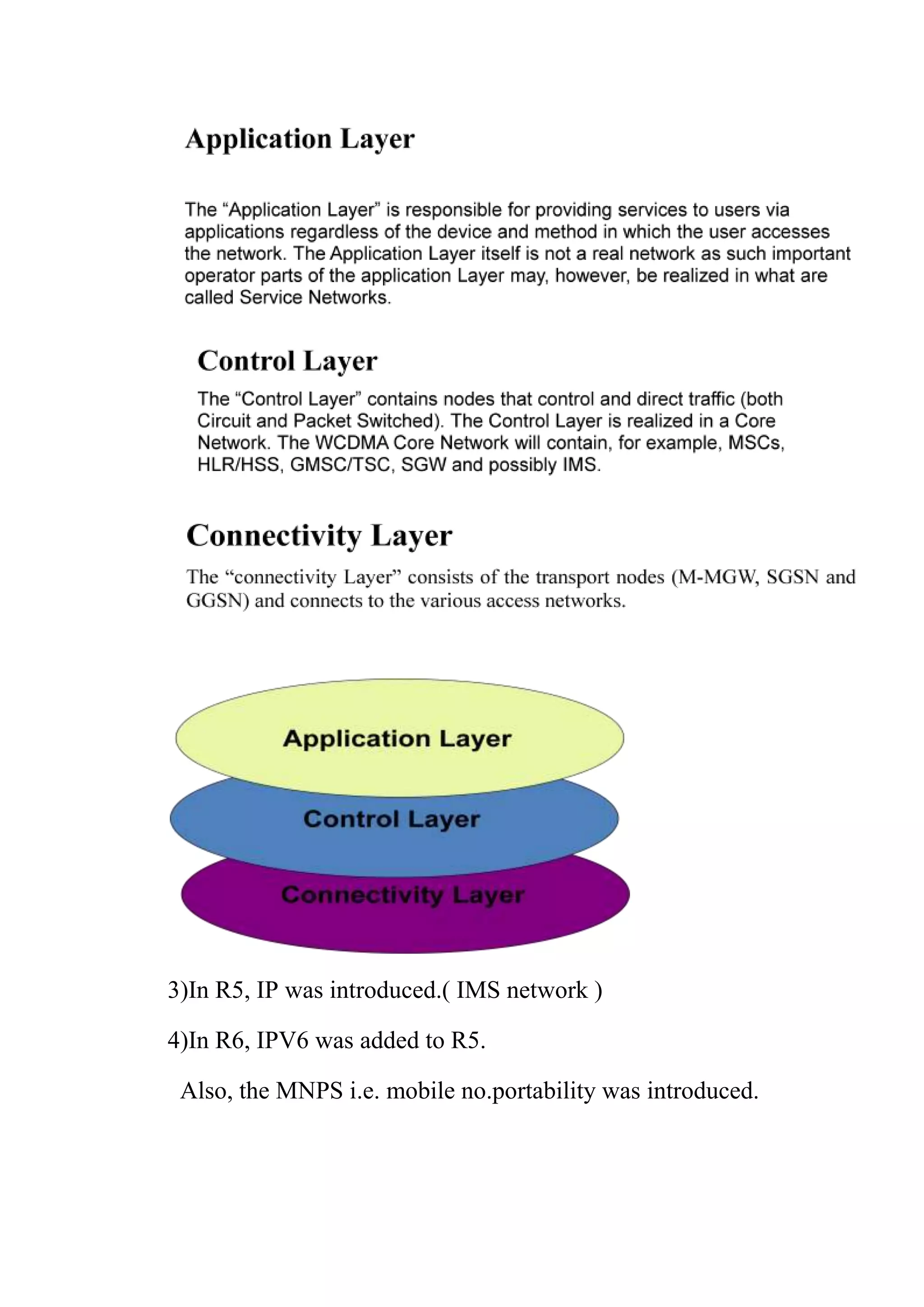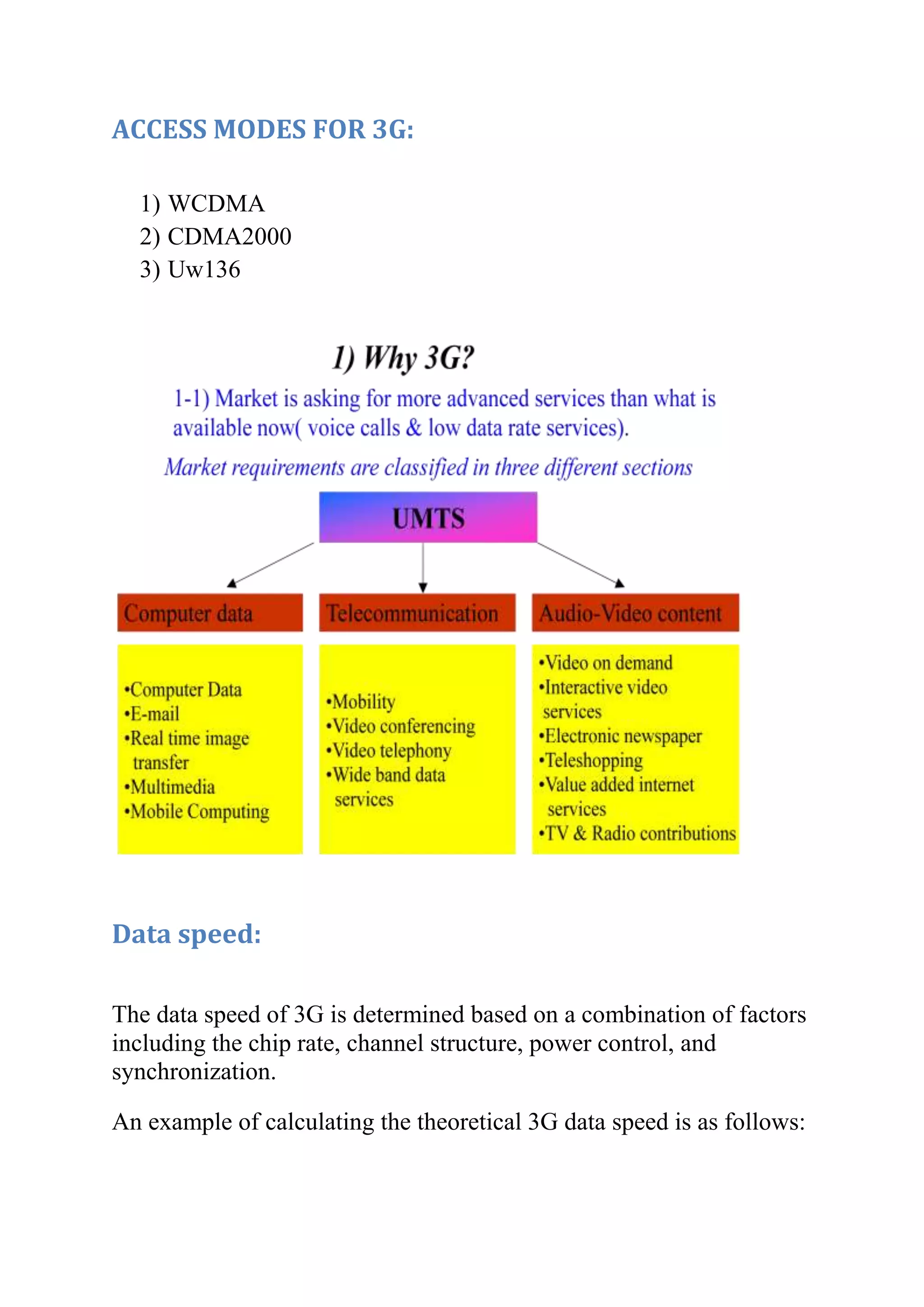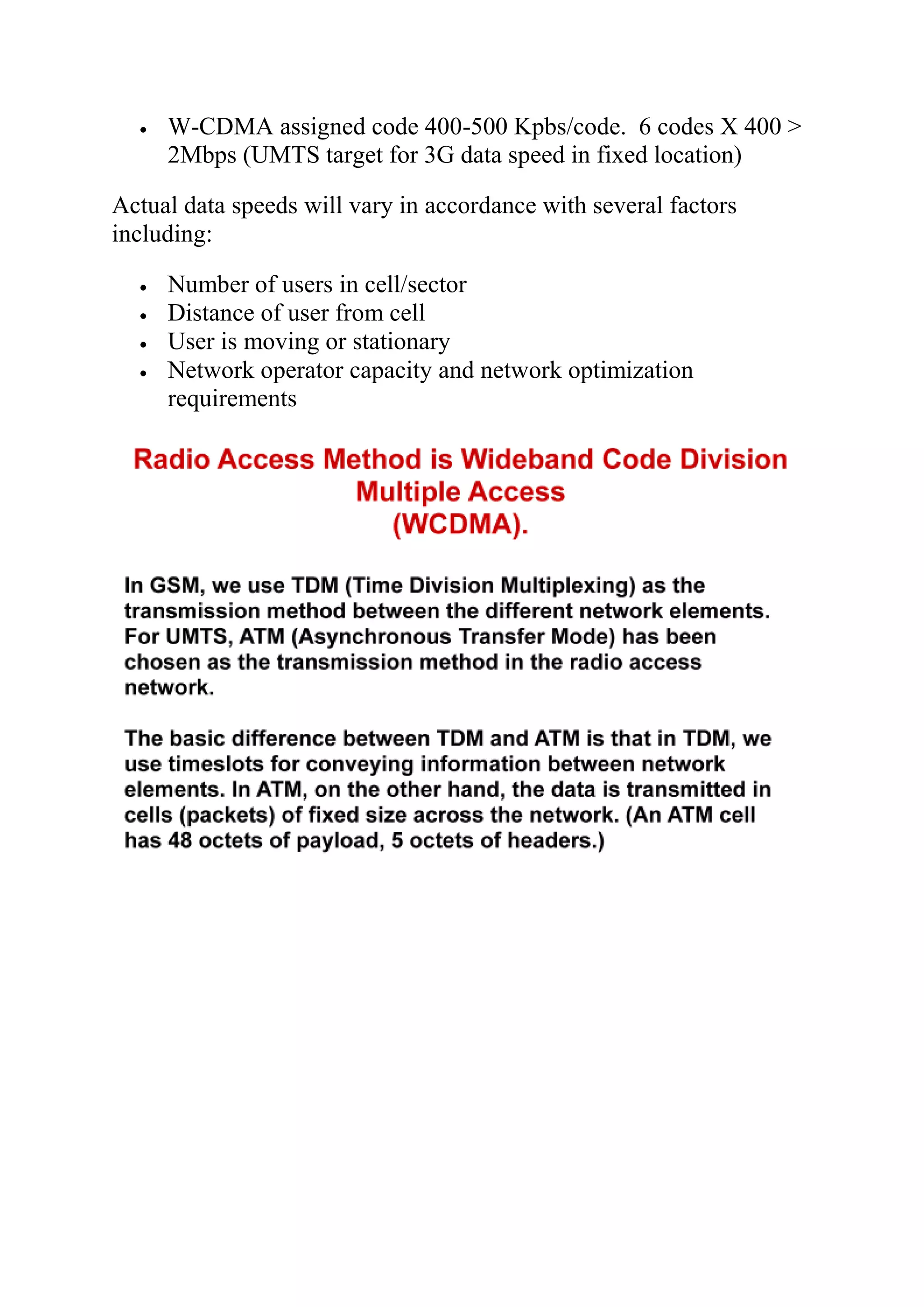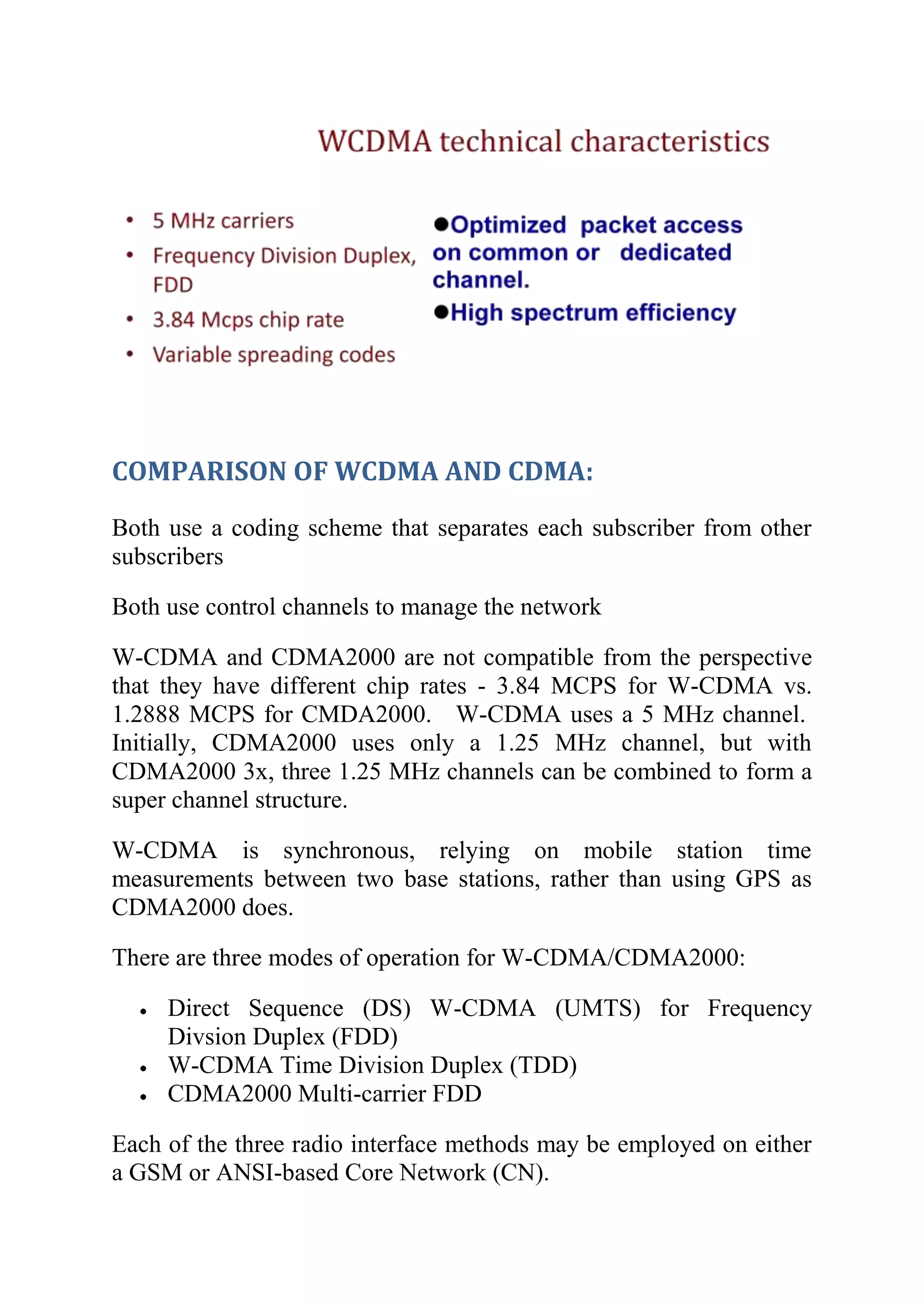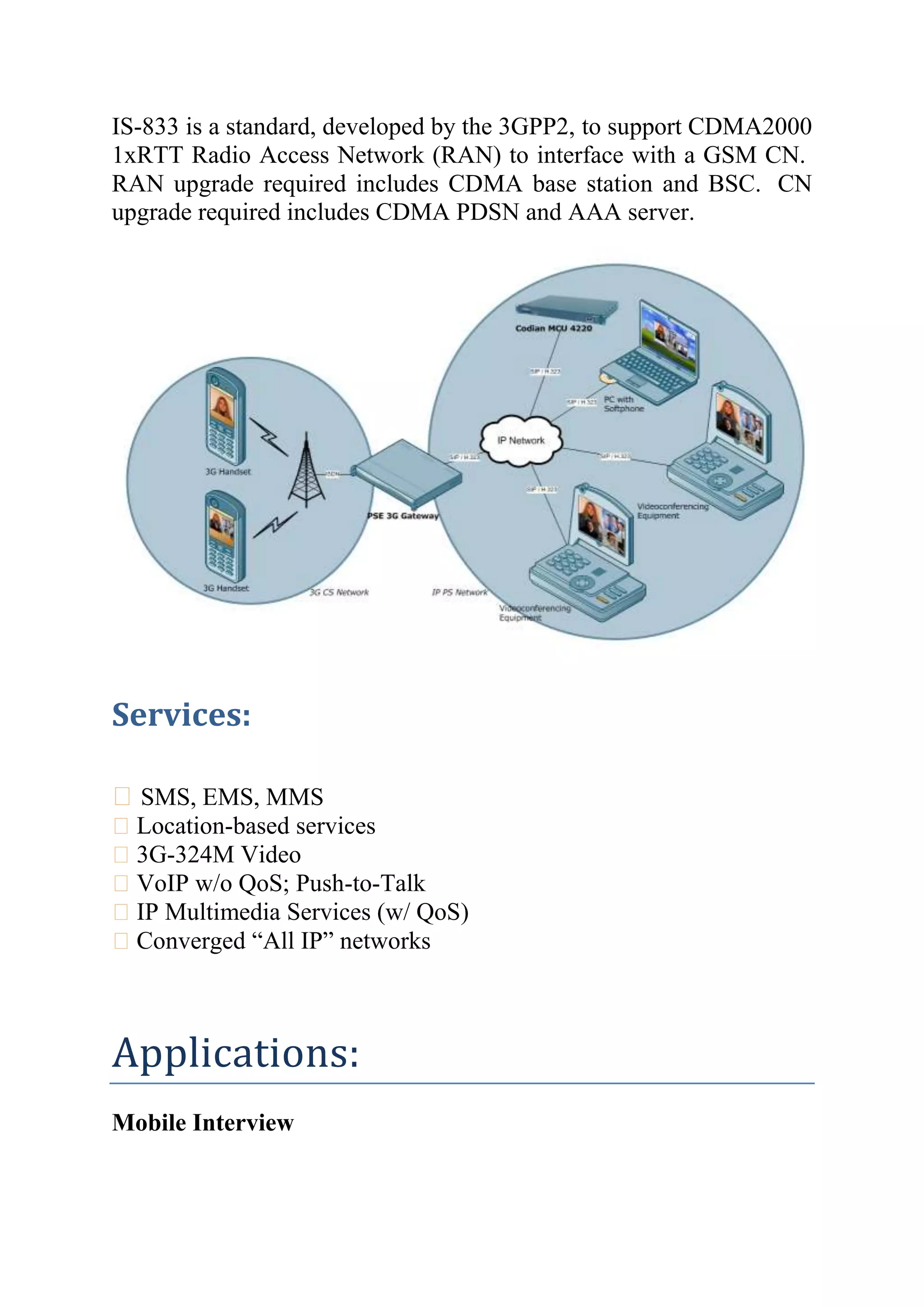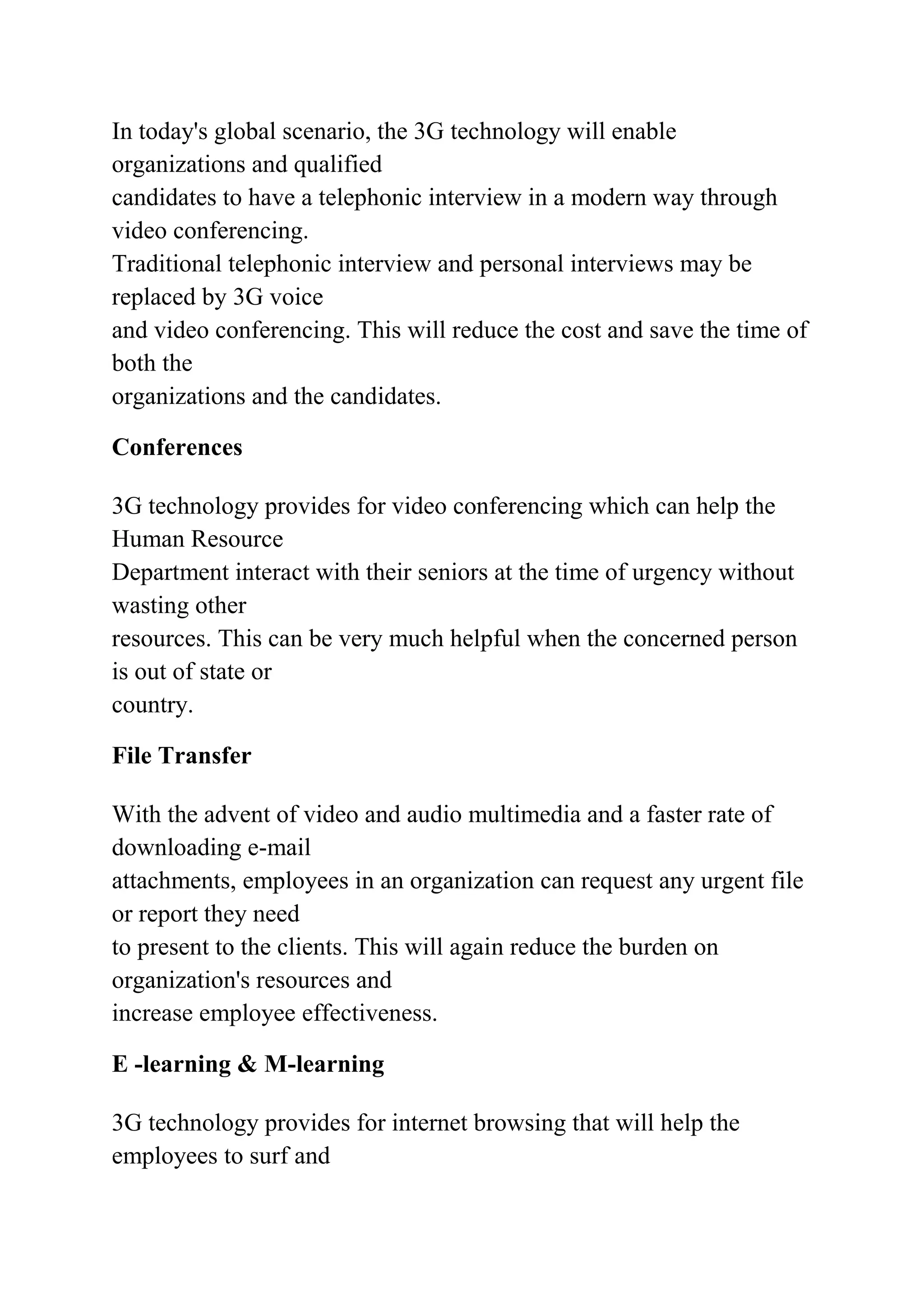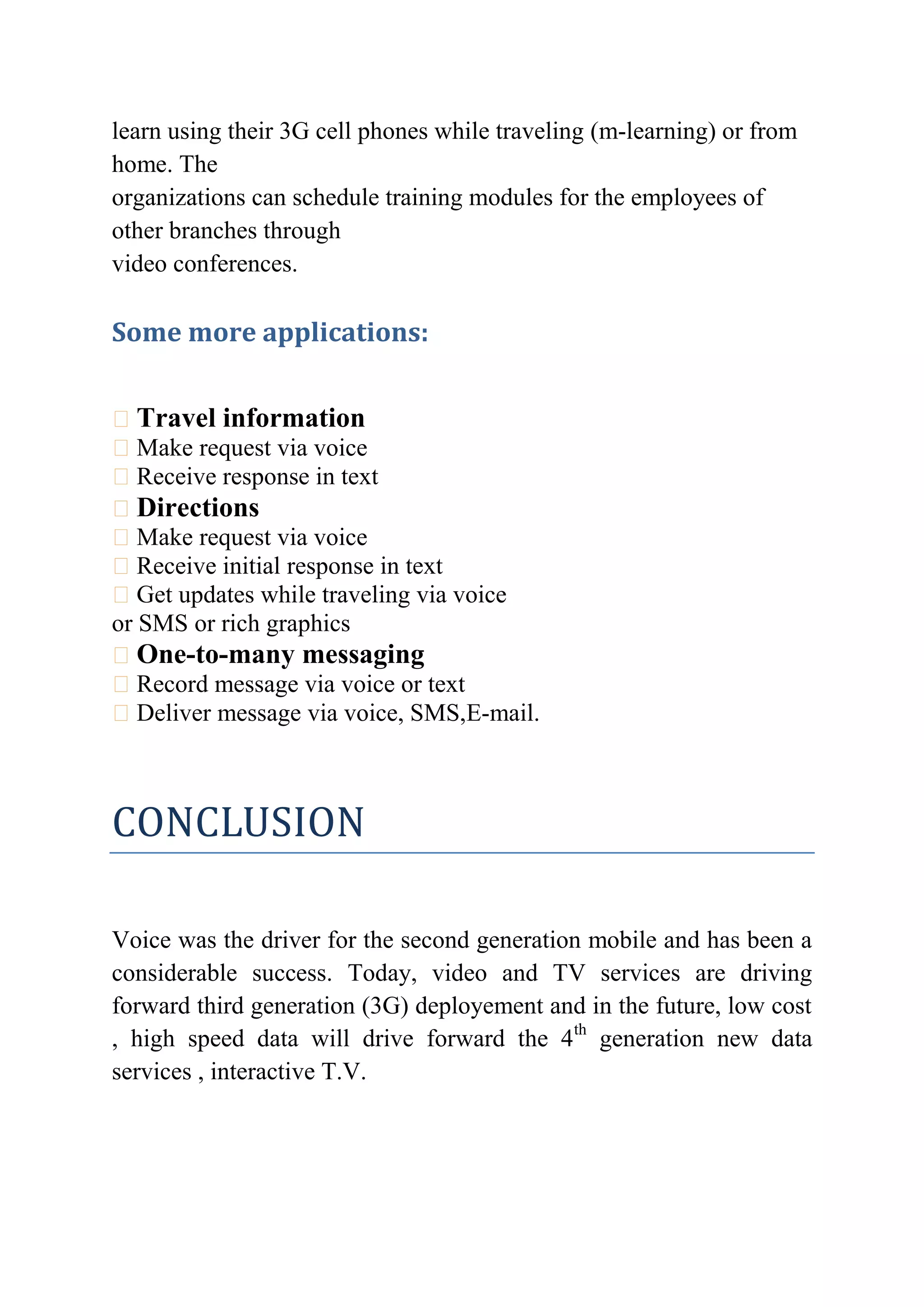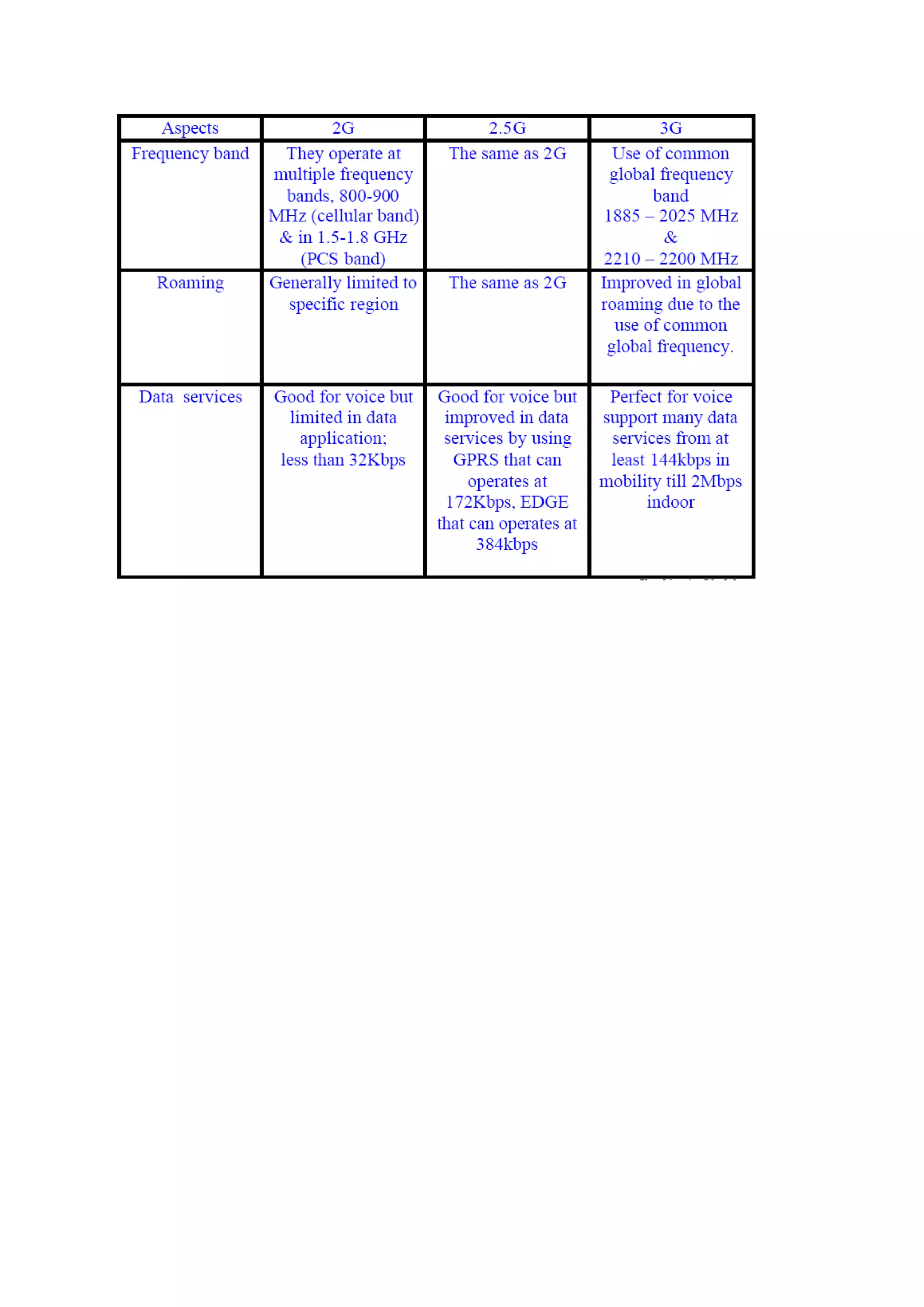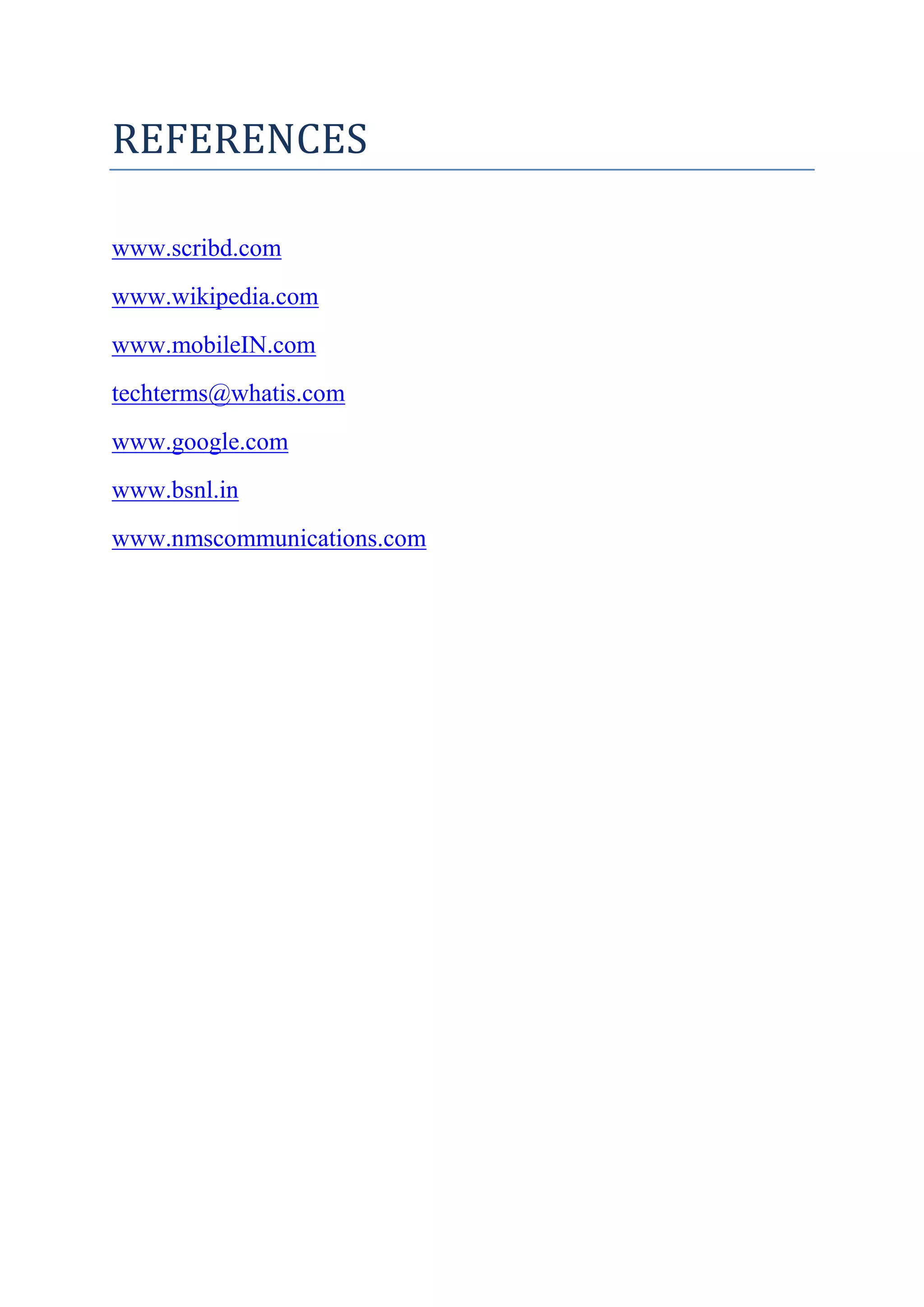The document discusses the evolution of mobile communication technologies from 1G to 3G. It provides an overview of 1G analog networks, 2G digital networks including GSM and CDMA, and the transition technologies 2.5G and 2.75G. It then focuses on defining 3G as the next generation mobile standard providing multimedia services and broadband data speeds.
![2011 PROJECT REPORT BSNL [3G and WCDMA]BY:NIBEDAN BHAWSINKABATCH: 53REG NO. 1333<br />PREFACE<br />Project method is an effective method of learning and doing. While doing the projects we learn the skills of planning and organising facts and materials. Knowledge gained by this method is long lasting unlike the knowledge gained by memorizing facts. It includes the process of research, thorough study and understanding and also includes the presentation of correct data in an effective way. In this project we attempt to study about the topic: 3G and WCDMA. We learn about the new technology “3G” and also the technology behind 3G i.e. WCDMA. <br /> This project covers all the GSM generations i.e. the evolution of the mobile communication. It also outlines the history of the communication. It also attempts to discuss about the need, vision, architecture, access networks, services provided and the applications of the 3G .<br />ACKNOLEDGEMENT<br />I would like to thank my batch incharge SHRI HARI HARA SHAOO for extending his helping hand towards this project and also assigning me the topic of “ 3G and WCDMA ” .<br /> I would also like to express my gratitude to all the teaching faculty for giving there valuable time for explaining all the topics clearly in a detailed manner.<br /> Not to forget my friends and parents for their constant love and support.<br />INTRODUCTION<br />3G is the next generation of mobile communications systems. It enhances the services such as multimedia, high speed mobile broadband, internet access with the ability to view video footage on your mobile handset. With a 3G phone and access to the 3G network you can make video calls, watch live TV, access the high speed internet, receive emails and download music tracks, as well as the usual voice call and messaging services found on a mobile phone, like person to person video, live streaming, downloadable video of entertainment, news, current affairs and sport content and video messaging.<br />Third generation (3G) networks were conceived from the Universal Mobile Telecommunications Service (UMTS) concept for high speed networks for enabling a variety of data intensive applications.<br /> 3G systems consist of the two main standards, CDMA2000 and W-CDMA, as well as other 3G variants such as NTT DoCoMo's Freedom of Mobile Multimedia Access (FOMA) and Time Division Synchronous Code Division Multiple Access (TD-SCDMA) used primarily in China.<br />WHAT IS 3G?<br />3G or 3rd generation mobile telecommunications, is a generation of standards for mobile phones and mobile telecommunication services fulfilling the International Mobile Telecommunications-2000 (IMT-2000) specifications by the International Telecommunication Union.[1] Application services include wide-area wireless voice telephone, mobile Internet access, video calls and mobile TV, all in a mobile environment. To meet the IMT-2000 standards, a system is required to provide peak data rates of at least 200 kbit/s. <br />THINGS TO UNDERSTAND BEFORE DISCUSSING 3G<br />3G is a mobile standard which provides high data rate transfer. But don’t you think we must first understand about the communication?<br />Communication is the successful flow of data from one end(or device) to other end.<br />Man has been struggling a lot for the communication purpose and has always been in a search for an easier and smarter way to communicate.<br />He has made tremendous improvement and development in the communication sector in order to make the communication process simpler , faster , cheaper and advanced.<br />HISTORY<br />Previously during the kings age, in ancient times, their existed the concept of message bearers who used to take the message from the king, and delivered it to the emperor of the other throne.<br />Then came the concept of pigeon, when pigeon was used as a source of communication. The message was tied on pigeon’s neck and it was delivered to the receiver.<br />All these were adopted for long distance communication. There were significant improvement in the communication sector and man was able to create a wireline method of communication.<br />During its early stage for making the STD ( subscriber trunk dialling ) calls, user had to give the no.to the telephone operator, then he would be connected to the receiver within 2-3 days at any time. <br />Then as the time passed by, communication sector witnessed significant improvement when the long distance communication became easier and cheaper, now there was no need to go to the operator and wait for 2-3 days, now it was a matter of 2-3 seconds.<br />This was possible by using the access network of PSTN.<br />PSTN stands for public switch telephone network. It is a landline network. Previously only voice communication was possible , but now data communication is also possible using DSL( digital subscriber line )<br />With this advancement, the telephone operators were convienced and determined to make communication wireless. With this the world saw the evolution of mobile technology. It used the access network known as PLMN( public land mobile network )<br /> <br /> GSM<br /> <br /> PLMN<br /> CDMA<br />EVOLUTION OF MOBILE COMMUNICATION<br />The GSM saw the following generations:-<br />1st generation (1G)](https://image.slidesharecdn.com/bsnlproject-110710145944-phpapp02/75/Bsnl-project-1-2048.jpg)
